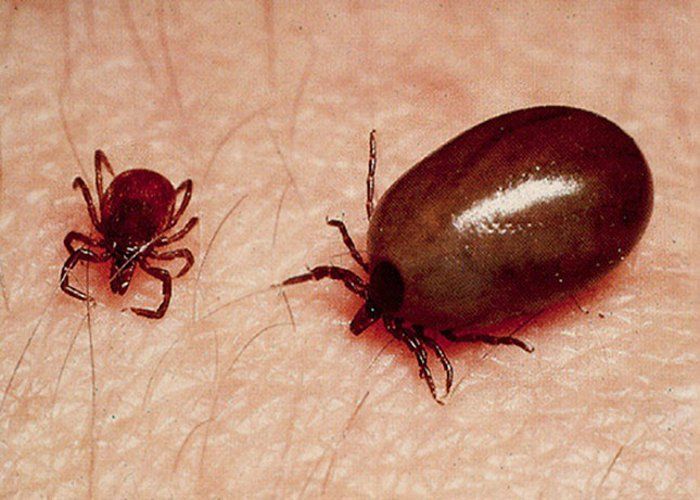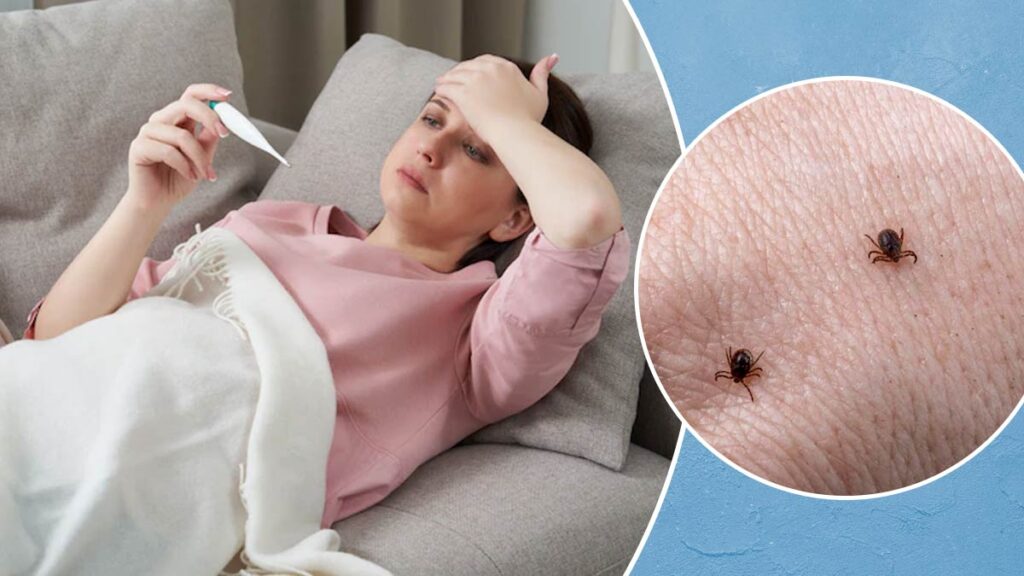Scrub Typhus: Causes, Symptoms, and Treatment Explained:
Scoub typhus is a perilous but frequently misconstrued infectious disease caused by a minor life form and spread by even more modest creepy crawlies. In country and forested locales over Asia, counting Nepal, India, and parts of Southeast Asia, clean typhus has been discreetly influencing thousands of individuals each year. Regularly befuddled with other fevers like dengue or typhoid, this ailment can gotten to be life-threatening if not treated in time.
This comprehensive web journal points to provide you clear and exact data almost scour typhus—its causes, side effects, determination, treatment, anticipation, and why mindfulness things more presently than ever some time recently.
1. What is Scrub Typhus?
Scrub typhus, some of the time alluded to as “bush typhus,” is an intense febrile sickness caused by the bacterium Orientia tsutsugamushi. It is transmitted to people through the chomp of contaminated chiggers, which are larval bugs found in lush and inadequate areas.
The term “clean” alludes to the sort of vegetation where the chiggers live. The malady is portion of the typhus gather of fevers, but not at all like classical typhus, it is not spread by lice or insects. The primary carriers are bugs that nibble and contaminate people whereas bolstering on their skin.
Scrub typhus is endemic in the so-called “tsutsugamushi triangle”—a locale covering parts of Southeast Asia, Japan, China, Northern Australia, and the Indian subcontinent.
2. Causes and Transmission of Scrub Typhus
Causative Agent
- The infection is caused by a microbes named Orientia tsutsugamushi, a sort of intracellular pathogen that attacks and increases interior human cells.
How is it Spread?
- Scrub typhus is not infectious from individual to person.
- It spreads through the nibble of tainted chigger vermin (Trombiculid mites).
- These bugs flourish in tall grasses, bushes, paddy areas, timberland edges, and ineffectively kept up country areas.
- Mite hatchlings chomp uncovered skin and transmit the microscopic organisms amid the nourishing process.
At-Risk Populations
- Farmers, field specialists, campers, trekkers, and individuals living in country or forested areas.
- Children playing outside in unmaintained green ranges.
3. Signs and Symptoms of Scrub Typhus
Scour typhus’s side effects regularly start 6 to 21 days after the bite. In its early stages, it may appear like any other viral fever, but particular signs help separate it when watched carefully.
Common Symptoms
- High fever (often 101°F to 104°F or more)
- Severe headache
- Body ache and muscle pain
- Chills and sweating
- Loss of appetite
- Abdominal pain
- Fatigue and weakness
- Swollen lymph nodes
- Nausea and vomiting
- Dry cough
Unique Sign: Eschar
- One of the most critical recognizing highlights of scour typhus is a dim scab or sore, known as an eschar, which shows up at the location of the bug bite.
- It looks like a dark hull or cigarette burn and is as a rule effortless and non-itchy.
- Eschars are more commonly found in skin folds—underarms, crotch, waistline, or behind the ears.
Rash
- Some patients may develop a red spotted rash, usually appearing around the 5th day of illness.
4. Complications of Untreated Scrub Typhus
If scour typhus is not analyzed and treated early, it can lead to genuine complications including:
Pneumonia (lung infection)
Encephalitis (brain inflammation)
Meningitis
Hepatitis (liver damage)
Kidney failure
Sepsis (broad contamination in the body)
Multi-organ failure
In serious cases, clean typhus can be deadly, with mortality rates as tall as 30–40% in untreated patients.
5. Diagnosis of Scrub Typhus
One of the major challenges in controlling scour typhus is the trouble in early conclusion. Its indications are non-specific and take after numerous other fevers like:
Typhoid fever
Dengue fever
Malaria
Leptospirosis
Clinical Diagnosis
Doctors usually consider scrub typhus when:
- A patient has a fever for more than 5 days
- There is a history of exposure to bushes or rural areas
- The eschar is present
Laboratory Tests
Corroborative tests may include:
IgM ELISA Test – Recognizes antibodies particular to Orientia tsutsugamushi
PCR (Polymerase Chain Response) – Recognizes bacterial DNA
Weil-Felix Test – An more seasoned test, less solid but still utilized in low-resource settings
Complete Blood Number (CBC) – Appears moo platelet check, moo white cells
Liver and kidney work tests – To identify organ association
6. Treatment of Scrub Typhus
Antibiotic Therapy
Clean typhus reacts exceptionally well to early anti-microbial treatment. Patients by and large begin feeling superior inside 24 to 48 hours of medication.
The prescribed anti-microbials include:
Doxycycline – First-line treatment for most age bunches (but children and pregnant women)
Azithromycin – Secure for children and pregnant women
Chloramphenicol – Utilized when doxycycline is not accessible or contraindicated
Duration of treatment is typically 5 to 7 days, or until 3 days after fever subsides.
Supportive Care
In serious cases, hospitalization may be fundamental. Treatment includes:
IV fluids
Oxygen treatment (for breathing problems)
Monitoring of liver, kidney, and heart function
Management of complications like stun, meningitis, or respiratory disappointment
Prognosis
With proper and timely treatment, the recovery rate is excellent. Untreated scrub typhus, however, can be deadly.
7. Prevention of Scrub Typhus
There is currently no vaccine available for scrub typhus, so prevention is key.
Protective Measures
- Maintain a strategic distance from High-Risk Ranges: If conceivable, maintain a strategic distance from resting or resting in zones with tall grass, bushes, or timberlands, particularly amid the blustery season.
- Wear Defensive Clothing: Long sleeves, long pants, and closed shoes diminish the chances of vermin bites.
- Use Creepy crawly Repellents: Apply repellents containing DEET or permethrin to uncovered skin and clothing.
- Shower After Open air Exercises: Bathe promptly and alter into clean dress to diminish bug exposure.
- Maintain Clean Environment: Keep domestic environment clean, expel tall grass, and trim bushes.
- Educate Communities: Provincial individuals ought to be made mindful of the illness, its side effects, and ways to anticipate disease.
8. Scrub Typhus in Nepal and South Asia
In recent years, scrub typhus cases have risen sharply in Nepal, especially in hilly and Terai regions. Factors contributing to this rise include:
Increased mindfulness and testing
Changes in agrarian practices
Unchecked development of vegetation
Climate alter and rainstorm effects
Nepal’s Service of Wellbeing and Populace has detailed thousands of cases in the past few a long time, with a few passings due to late conclusion.
High-Risk Districts in Nepal
- Chitwan
- Nawalparasi
- Kailali
- Kanchanpur
- Jhapa
- Makwanpur
These districts experience more cases, especially during and after the monsoon season (July to October).
9. Myths and Misconceptions
✅ Myth: Scrub typhus spreads from person to person
Fact: It does not. It is only spread through mite bites.
✅ Myth: Antibiotics do not work
Fact: Scrub typhus is highly responsive to antibiotics like doxycycline if started early.
✅ Myth: It is a new disease
Fact: Scrub typhus has been around for decades, but awareness and detection have increased recently.
10. Government and Public Health Role
Governments and wellbeing offices play a crucial part in overseeing clean typhus:
Conducting mindfulness campaigns in country communities
Ensuring accessibility of demonstrative packs in neighborhood wellbeing posts
Training specialists to recognize and treat clean typhus
Distributing preventive devices (repellents, wellbeing instruction leaflets)
Surveillance and detailing of episodes to dodge uncontrolled spread
Conclusion: Stay Alert, Stay Safe
Clean typhus is a perilous but preventable and treatable infection. Its rise in nations like Nepal signals the require for more grounded mindfulness, early determination, and fast treatment. Recognizing the indications, particularly fever with eschar, and looking for restorative care early can spare lives.
Whether you’re a wellbeing proficient, parent, understudy, or provincial inhabitant, knowing around clean typhus can offer assistance ensure not as it were yourself but too your family and community.

See More Related:
What Are Benefits Of Ginger For Human Health?










More Stories
Yarsagumba
What Are Benefits Of Ginger For Human Health?
What Is Urinary Tract Infection?